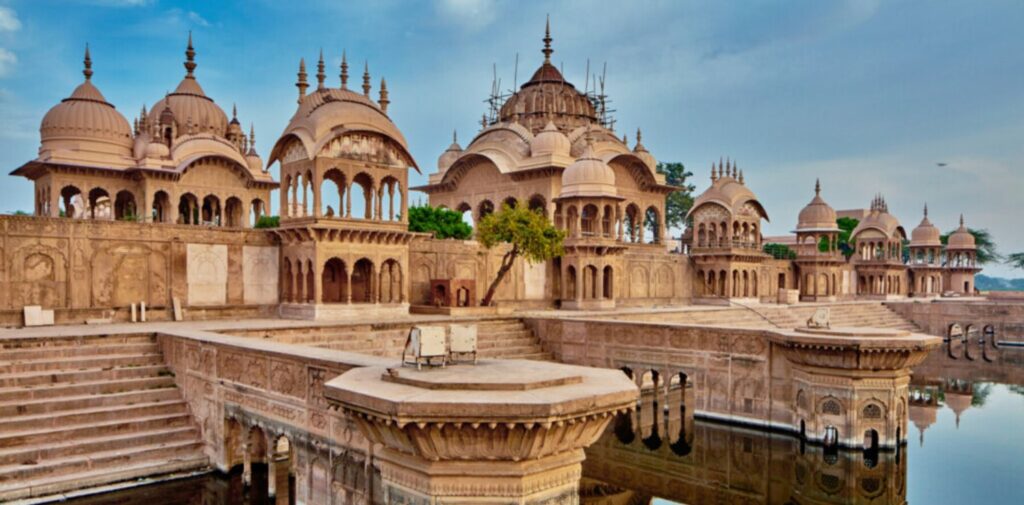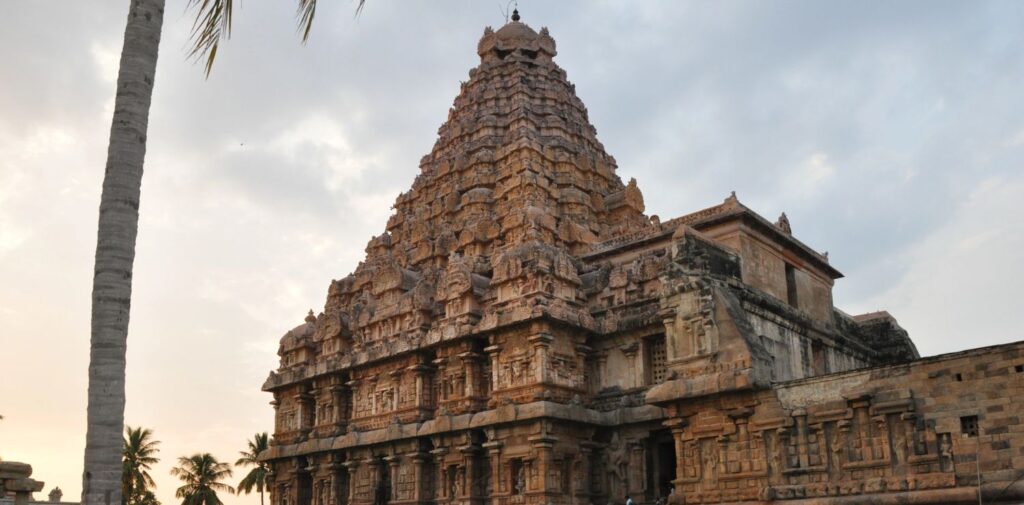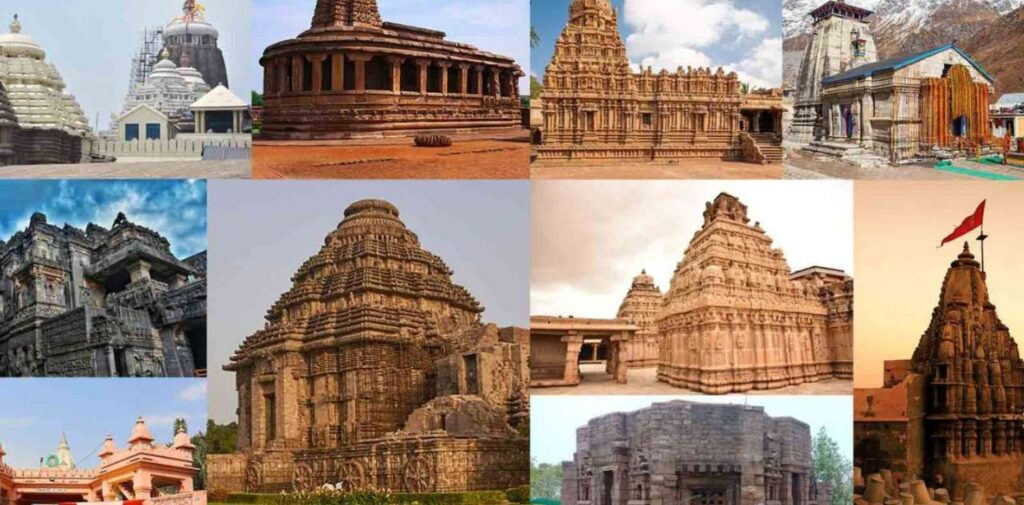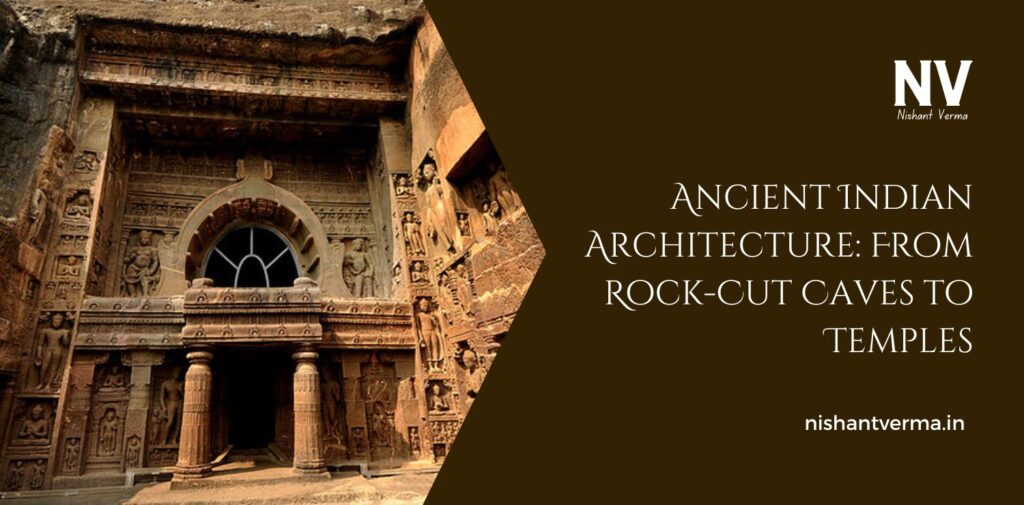India has a long and fascinating history of building structures that are not only beautiful but also full of meaning. From ancient rock-cut caves to majestic temples, Indian architecture has evolved over thousands of years. This journey through time shows how architecture in India was not just about creating buildings, but also about expressing spirituality, art, and science.
Let’s take a look at how ancient Indian architecture developed and how it continues to inspire people today.
What is Ancient Indian Architecture?
Ancient Indian architecture refers to the buildings, temples, caves, and other structures built in India many years ago. It includes everything from the early rock-cut caves used by monks to the grand temples dedicated to gods and goddesses. Over time, Indian architecture grew more complex, with new styles, techniques, and designs.
The main focus of ancient Indian architecture was to build places that could be used for religious purposes, like temples, caves, and stupas, but also for palaces, forts, and other public buildings.

The Start of Indian Architecture: The Rock-Cut Caves
In the earliest stages of Indian architecture, people began to carve out homes and places of worship from rocks. These were the rock-cut caves, which date back to around the 3rd century BCE. The rock-cut caves were carved into hillsides or mountains, creating cool, safe spaces where people could live, meditate, and pray.
The Ajanta and Ellora Caves
Some of the most famous rock-cut caves are the Ajanta Caves and Ellora Caves in Maharashtra. These caves were made by Buddhist monks as places of worship and meditation.
- Ajanta Caves: The Ajanta Caves are around 30 caves carved into the mountainside. Inside these caves, you can find beautiful paintings and sculptures of Buddhist gods, stories from the life of Buddha, and scenes from ancient Indian life. These caves are a mixture of art and architecture, with high ceilings, intricate carvings, and wall paintings that are still admired today.
- Ellora Caves: The Ellora Caves are a set of 34 caves that include Buddhist, Hindu, and Jain temples. The most famous of these is the Kailasa Temple, a massive structure carved out of a single rock. The precision and size of this temple show the high level of skill the builders had at the time.
These caves were important because they were among the first examples of architecture that was carved directly from the rock, instead of being built from stones or bricks.
The Rise of Temples: Expression of Faith
As time passed, people started building more and more temples. Temples became the heart of Indian architecture, and their designs grew more beautiful and complex. The temples were not just places to worship, but also symbolized the relationship between the earth, the heavens, and the gods.
Early Temples: Simple Yet Beautiful
The earliest temples were small and simple. They were often built using stone and had a basic structure with a small room for the idol of the god or goddess. Over time, these temples grew larger and more detailed, with intricate carvings and beautiful architecture.
The Gupta Period: Golden Age of Temple Architecture
The Gupta period (around the 4th to 6th century CE) is often called the “Golden Age” of Indian architecture. During this time, temples became more elaborate and grand. The Nagara style of architecture was developed, where temples were built with a large tower above the central hall.
- Example: The Dasavatara Temple at Deogarh, built during the Gupta period, is one of the earliest examples of this style. The temple’s architecture has beautiful carvings and designs that tell stories from Hindu mythology.
Dravidian Style: The Rise of the South Indian Temples
While northern India was focused on the Nagara style, southern India developed its own unique style of temple architecture called Dravidian style. This style is famous for its large towers, called Shikharas, which rise high above the temple, and for the Pillared halls and intricate sculptures of gods and goddesses.
- Example: One of the most famous examples of Dravidian architecture is the Meenakshi Temple in Madurai, Tamil Nadu. This temple has towering gateways, beautiful sculptures, and a huge central hall, making it a stunning example of South Indian architecture.

Grand Temples of the Chola, Chalukya, and Vijayanagara Kings
As Indian kings became more powerful, they built even grander temples. The Chola dynasty (9th to 13th century CE), Chalukya dynasty (6th to 12th century CE), and Vijayanagara Empire (14th to 17th century CE) all contributed to the rise of large, grand temples that are still visited by people today.
Chola Temples: Majestic and Magnificent
The Chola dynasty, especially under the rule of Rajaraja Chola I, built some of the most magnificent temples in India. They are known for their massive temple complexes with large towers and intricate artwork.
- Example: The Brihadeeswarar Temple in Thanjavur is one of the greatest examples of Chola architecture. The temple’s massive dome, tall tower, and detailed carvings make it a masterpiece of Indian architecture.
Chalukya Temples: Sculptures and Intricate Details
The Chalukya dynasty was known for building temples with stunning sculptures and artwork. They blended North Indian and South Indian architectural styles to create something unique.
- Example: The Kailasanatha Temple in Ellora and the Badami Caves are excellent examples of the Chalukya style. These temples and caves are filled with amazing carvings that tell stories from Hindu mythology.
Vijayanagara Empire: Large Temples and Forts
The Vijayanagara Empire in southern India (14th to 17th century CE) is known for building large, impressive temples and forts. The architecture of this period combined elements of the Dravidian style and added new innovations.
- Example: The Virupaksha Temple in Hampi is a perfect example of Vijayanagara architecture. This temple has massive gates, beautiful sculptures, and a huge central courtyard.
Stupas and Other Religious Structures
While temples were the focus of much of India’s architecture, another important type of building was the stupa. A stupa is a large, dome-shaped structure built to house the relics of a Buddha or other important religious figures. The most famous stupa is the Sanchi Stupa in Madhya Pradesh, which dates back to the 3rd century BCE. The Sanchi Stupa is beautifully decorated with carvings that tell the story of Buddha’s life.

The Enduring Legacy of Indian Architecture
Ancient Indian architecture left behind an incredible legacy that still influences the buildings we see today. The grand temples, intricate rock-cut caves, and amazing sculptures are just some of the things that make Indian architecture so unique. Many of these buildings are still standing and are considered important parts of India’s cultural heritage.
- Modern Influence: Today, ancient Indian architecture continues to inspire architects around the world. The designs of temples, palaces, and even forts influence the way buildings are constructed in many countries.
- Tourism: Ancient Indian architecture also attracts millions of tourists each year. People come from all over the world to see the beautiful temples and caves, learn about India’s history, and admire the craftsmanship of ancient builders.
Conclusion: The Timeless Beauty of Indian Architecture
Ancient Indian architecture tells the story of a civilization that valued art, religion, and science. From the early rock-cut caves to the grand temples built by powerful kings, Indian architecture grew in complexity and beauty over time. Today, these buildings continue to inspire awe and admiration.
By studying the amazing architecture of ancient India, we can understand the deep connection between people, religion, and the land. These buildings, with their intricate designs and spiritual significance, remind us of India’s rich cultural past and its lasting impact on the world.




